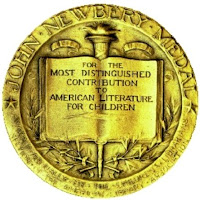Charlotte Canelli is the library director of the Morrill Memorial Library in Norwood, Massachusetts. Read Charlotte's column in the February 22, 2018 edition of the Norwood
Transcript and Bulletin.
This past weekend I spent the entire time under my covers with the virus that masqueraded darn close to that of the flu. Waking from fitful sleeps, I’d ease out of bed, drop my aching legs on the floor, and plod down the hallway for cough medicine and pain reliever. I’d occasionally think about the laundry or chores I’d abandoned before I was struck by this nasty bug. Instead, weak and fog-brained, I’d find myself crawling back to bed.
The early deadline for our weekly newspaper column, From the Library, passed on Friday night, as did the hard-and-fast Sunday evening deadline. I woke Monday morning and realized that I was soon going to miss writing my week’s assignment for the very first time in nine years. And it just so happened to be my 250thcolumn.
This week February 11 marked the beginning of our 10th year of writing for the Norwood Transcript & Bulletin (it was the Daily News Transcript when we first started writing the From the Library column in 2009. After writing a half dozen weekly columns myself in 2009 (including the dreaded deadlines), I enlisted the help of other professional librarians at the Morrill Memorial Library. Library interns and other department staff have taken turns writing with their own voices and styles and since 2009 many of them have written regularly. (In fact, one of the requirements for joining our staff has been an ability and enthusiasm to contribute to the weekly newspaper column).
In total, thirty-one library staff and interns have written 463 columns since February 2009. That’s about 450,000 words. (Or as many words as Lord of the Rings by J.R.R. Tolkien.) On average, a novel is somewhere between 60,000 and 80,000 words. Doing the math, you’ll find we are a prolific bunch of writers.
Over nearly a decade, I’ve written about birds and bees (separately), dogs I’ve loved – a dog I’ve lost. I’ve written about disasters (earthquakes, tsunamis, firestorms, and sinking ships) and triumphs (Oscars, homeschooling, the Red Sox, and Big Papi’s visit to our library). Over the past nine years, my not-so-private life has seen the weddings of all four of our children and the subsequent amazing births of six grandbabies in three years. It saw the graduation from high school of our eldest grandson. My columns have described camping escapades to Vermont and travels within the country (Chicago, Florida, Indianapolis, Washington, DC, and New York) and abroad (Ireland, Mexico, Italy and Hawaii.) I’ve written about the personal sadness of divorce, of losing a child, and the national unimaginable tragedies like Sandy Hook. Column topics have been about the joys of friendship, food, reading and movies. Or about the Morrill Memorial Library, its architecture and history and of literacy and librarianship.
I submitted my first column for the February 11, 2009 edition of the newspaper. I highlighted the Musical Sundays program and the February 14 concert featuring Love Songs. I’d just become the library director four months earlier, starting my job on September 22. I’d spent the previous week in New York City and watched Lehman Brothers employees exit their offices on Seventh Avenue on September 15. The financial firm, with over 25,000 employees world-wide, declared bankruptcy that day. Started in 1844, Lehman Brothers had survived financial upheaval – the Great Depression, the World Wars, the Russian default – but it could not survive the subprime mortgage disaster that barreled its way through 2007 and 2008, leaving financial ruin in its wake.
In December of 2008 Bernie Madoff confessed to his great Ponzi scheme, topping off that disturbing year of economic upheaval. The reality of this financial pain was seen around the country, including in the towns and cities of Massachusetts. Norwood saw its own economic squeeze and as director, I navigated the cuts to the library’s budget and State Aid to Public Libraries grant. The worst of the years came later when budget cuts forced the library to close Sundays in the fall 2011 and winter of 2012, eliminating our Musical Sundays program. Yet, from 2009 through 2017, we increased programming by 300%. When once we offered 40 adult programs per year, that number has risen to over 225. Children’s programs have nearly doubled in the same time period. As a library we continue to thrive, weathering the storms much like we in Massachusetts always manage to do. And we’ve written about those successes in our From the Library column.
We are proud to have won two awards for our newspaper columns from the Massachusetts Library Association. The biannual MLA PR (public relations) Awards recognize libraries for their submissions for marketing, public relations, media and graphics work during the previous two years. Our library submitted a representative 25 columns written in 2013 and 2014 and again for those written in 2015 and 2016. We won first place in the News category at the awards ceremonies in 2015 and 2017. Choosing only 12-13 of the 52 columns written during a year was difficult as we were forced to leave the majority of columns on the “cutting room floor.”
All nine years of our columns (2009-2017) are printed and bound in annual editions of the 50+ columns. These spiral-bound editions are available at the Reference Desk. Columns can be found online at Norwood.WickedLocal.com (those published after the merger of the Daily Transcript and the Bulletin in 2009) and are also posted to the Library’s website each week. A complete archive of all 465 columns can be found on a searchable blog at fromthelibrarycolumn.blogspot.com.
It’s a pleasure writing for our local newspaper – a collaboration that spotlights our library, its resources, and our librarians. “Neither snow nor rain nor gloom of night stays” the library’s writers from writing each week. Or weariness from the flu.




